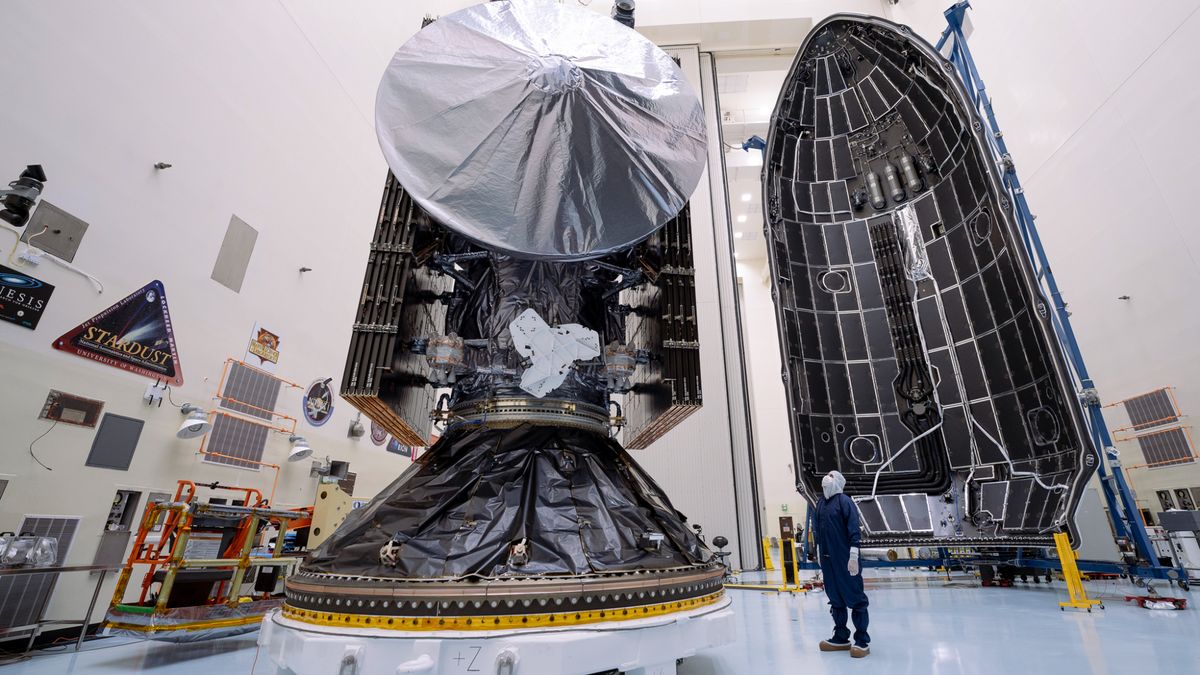"Dream, Dream, Dream! Conduct these dreams into thoughts, and then transform them into action."
- Dr. A. P. J. Abdul Kalam
"Dream, Dream, Dream! Conduct these dreams into thoughts, and then transform them into action."
- Dr. A. P. J. Abdul Kalam
16 Oct 2024
In order to study Europa, a moon with a massive subterranean ocean that might have the ingredients to support life, NASA's Europa Clipper has set out on its lengthy journey to Jupiter. The spacecraft took out from Launch Pad 39A at NASA's Kennedy Space Center in Florida on a SpaceX Falcon Heavy rocket Monday at 12:06 p.m. EDT.
Europa Clipper is the first NASA mission devoted to exploring an ocean world beyond Earth and the largest spacecraft NASA has ever constructed for a mission going to another planet. Using the strength of gravity assists, the spacecraft will travel 1.8 billion miles (2.9 billion kilometers) on a course that will take it to Mars in four months and back to Earth for another gravity assist flyby in 2026. In April 2030, the spacecraft will start orbiting Jupiter and then pass Europa 49 times.
Determining whether Europa possesses circumstances conducive to life is the mission's primary objective. Although Europa is comparable in size to our own Moon, its interior is distinct. Data from NASA's Galileo mission in the 1990s provided compelling evidence that there is a vast, salty ocean beneath Europa's ice that contains more water than all of Earth's oceans put together. Additionally, scientists have discovered evidence that suggests Europa may have energy sources and organic substances beneath its surface. There might be more livable worlds in our solar system and beyond than previously thought if the expedition finds that Europa is habitable.

(Source: Google Images)
“Congratulations to our Europa Clipper team for beginning the first journey to an ocean world beyond Earth,” said NASA Administrator Bill Nelson. “NASA leads the world in exploration and discovery, and the Europa Clipper mission is no different. By exploring the unknown, Europa Clipper will help us better understand whether there is the potential for life not just within our solar system, but among the billions of moons and planets beyond our Sun.”
The spacecraft will start its science-focused flybys of Europa in 2031. Europa Clipper is outfitted with nine science equipment and a gravity experiment, including cameras, an ice-penetrating radar, and a thermal instrument to search for regions of warmer ice and any recent water eruptions, and it will approach the surface as near as 16 miles (25 kilometers). Together, the most advanced set of scientific sensors NASA has ever deployed to Jupiter will gather information about the moon's deep interior, thin atmosphere, and icy crust.

(Source: Google Images)
Europa Clipper also includes the largest solar arrays NASA has ever utilized for an interplanetary mission, which will power those sensors in the wan sunlight that reaches Jupiter. The spacecraft is 100 feet (30.5 meters) long when its arrays are extended. It weighs roughly 13,000 pounds (5,900 kg) when propellant is loaded.
Since its official approval in 2015, the Europa Clipper project has received contributions from almost 4,000 individuals.
"This all reflects on the innumerable hours of commitment, creativity, and collaboration that made this moment possible as Europa Clipper sets out on its journey," said Jordan Evans, project manager at NASA JPL. “This launch represents not only the next phase of our solar system exploration, but also a step toward solving the mysteries of a different ocean world, motivated by our common curiosity and ongoing quest to find the answer to the question, 'Are we alone?'”